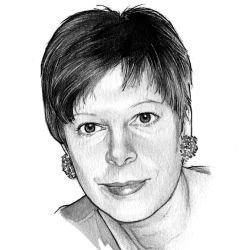
After all, I’ve been part of that monthly process since Bill Gates earned his first billion. One column, coming up.
So, why have I been staring at a blank screen the last three days? The reason, I must admit, is the same reason I’ve enjoyed this work for so long. The real beauty of working on ACM’s flagship publication is that nothing is ever the same. Unlike the majority of commercial and trade magazines, Communications rarely covers the same topic twice. Each issue truly follows a unique path to fruition.
In an effort to impart some sense of the production process, let’s take this issue as an example. Many of the seeds for this edition were planted by mid-2009. Our cover story on quantum algorithms was invited by the EiC, but often the articles and viewpoints have been submitted and accepted after rigorous review by members of Communications Editorial Board (for details, see Author Guidelines http://cacm.acm.org/about-communications/author-center/author-guidelines). The News Board, working with Senior Editor Jack Rosenberger, teleconference monthly to determine the most important and timely stories to pursue for each issue. Managing Editor Tom Lambert works with the Viewpoints Board to ensure that section presents a compelling collection of columnists and commentary, delivering many diverse views on science and industry practices from around the world. Monthly features like CACM Online and Last Byte are also spirited by HQ editors.
The editorial lineup for each issue is a collaborative effort by the EiC, Board section chairs, and HQ staff. The EiC has the final word on all things editorial and makes the ultimate decision on the cover story and cover image. In a perfect world, all the manuscripts slated for each issue (save news stories) should be in the hands of HQ editors eight weeks prior to publication. That’s when the real production cycle begins.
Pulling the Pieces Together
While the editorial elements have had months to simmer, the cover image and assorted graphical complements throughout this issue has only a few weeks to craft. The goal of the editorial artwork is to draw readers into an article by reflecting the subject in an intriguing way or by adding a creative spin to the subject. Given the assortment of topics in any edition, this is no small task. Therefore, one of the first steps in the process is a meeting with Group Publisher Scott Delman, staff editors, Art Director Andrij Borys, and Associate Art Director Alicia Kubista. Editors relay the gist of each article and volley ideas on how to best represent them graphically. Cover ideas take shape and artists and photographers are tapped. Over the weeks we watch early sketches turn into colorful works. Cover concepts can go through many iterations; often changing direction and detail as they progress.
While artwork is germinating, Lambert, Rosenberger, and Senior Editor Andrew Rosenbloom are editing every manuscript slated for the month. Working closely with the authors, their goal is to help make each article crisp and tight. Edited articles are sent to Assistant Art Director Mia Angelica Balaquiot, who flows the text into page galleys and redraws every submitted figure and table accompanying those articles to ensure a professional uniform presentation. Galleys are sent to the contact author for each article for one last look prior to publication. All final editorial tweaks are made; the design phase then takes over.
This is the juncture where editorial, artwork, and over 100 empty magazine pages merge. Borys and his team work under the ever-looming deadline to pull all the pieces together into a cohesive unit that flows from news stories, to viewpoints, to feature articles, to research, with lots of eye-catching elements in between. Staff editors read over every page one last time.
Advertising Sales Coordinator Jennifer Ruzicka submits the ad pages slated for the issue, and Production Manager Lynn D’Addesio coordinates every move between HQ and the printing facilities in Richmond, VA, where the final product is ultimately shipped.
As soon as one issue of Communications is "put to bed," we all move to the next one. There’s art to discuss, authors to contact, and deadlines, always deadlines. The process may not always run this smoothly (ah, perfect world), but each issue always reflects a total team effort, and it is always a privilege to be part of that team.
Diane Crawford, EXECUTIVE EDITOR



Join the Discussion (0)
Become a Member or Sign In to Post a Comment